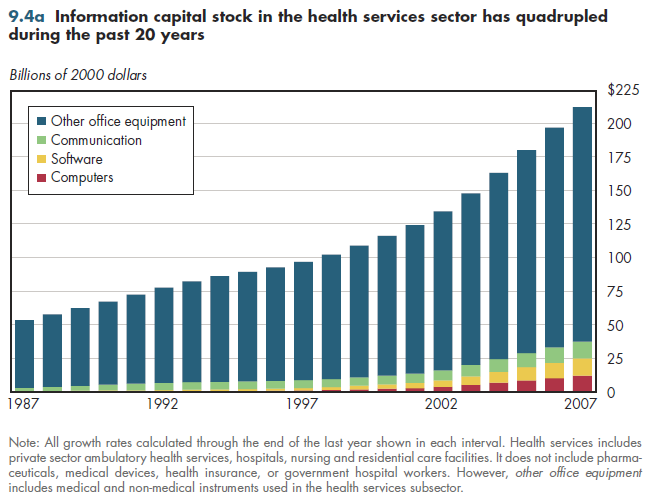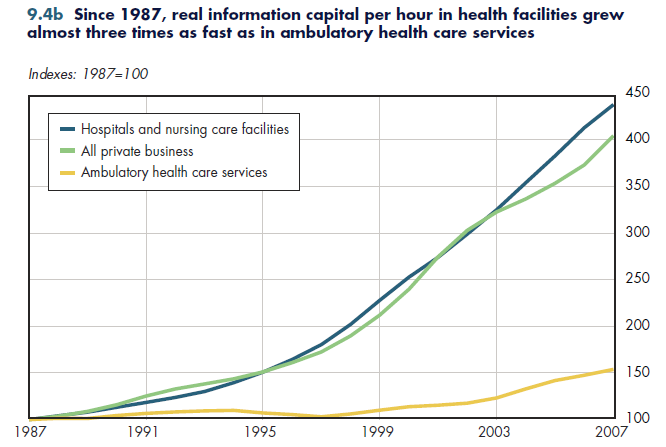Information capital stock in the health services sector has approximately quadrupled in the 20 years since 1987 (figure 9.4a). Such capital stock includes computers, software, and communications equipment. It also includes traditional office equipment. As with many other data series presented up to this point, this one is restricted to ambulatory health services and health facilities. The picture might well be different were parallel numbers available for pharmaceutical and medical device manufacturing.

More important, in the health sector, the BLS also includes medical instruments, whether as small as a pair of surgical clamps or as large as a PET scanner. With the huge growth in medical equipment (the industry's output more than doubled from 1987-2008), this large increase in information capital for medical services might not be that surprising. Indeed, excluding the "other office equipment" category, the total amount of information stock held in the form of computers, software, and communications equipment is less than $40 billion. This is 10 times the inflation-adjusted level of spending reported in 1987 but amounts to less than four cents per dollar of annual health services industry output.
A better metric compares real information capital to labor hours, because these too have grown since 1987. In the private sector overall, real information capital per hour quadrupled over the subsequent 20 years (figure 9.4b). For much of this period, the same metric for health facilities grew practically in lockstep with private business. After 2003, real information capital per labor hour grew somewhat faster in health facilities than in the rest of private industry. The growth rate for health facilities was almost triple the increase seen in the ambulatory health services industry.

Selected provisions of health reform are intended to stimulate greater investments in electronic medical records and other forms of health information technology. How much such infusions of new information capital will affect the relative growth trends shown is unclear. That is, this will increase the aggregate amount of information capital. But some of this might be labor-saving. So, the rate of growth in real information capital per hour might be slower or faster than in recent decades, depending on the extent to which capital substitutes for labor.
Download PowerPoint versions of both figures.
Download Excel workbooks used to create
Figure 9.4a Table and
Figure 9.4b Table.
[Note that you’d have separate links for each set of tables] Figures 9.4a and 9.4b were created from the following tables (the workbook includes all supporting tables used to create these tables):
- Fig. 9.4a: Table 9.4.1. Information Capital Stock, Private Health Care Services, 1987-2007
- Fig. 9.4b: Table 9.4.2. Information Capital per Labor Hour, Private Health Care Services and All Private Business, 1987-2007
- Department of Labor. Bureau of Labor Statistics.











